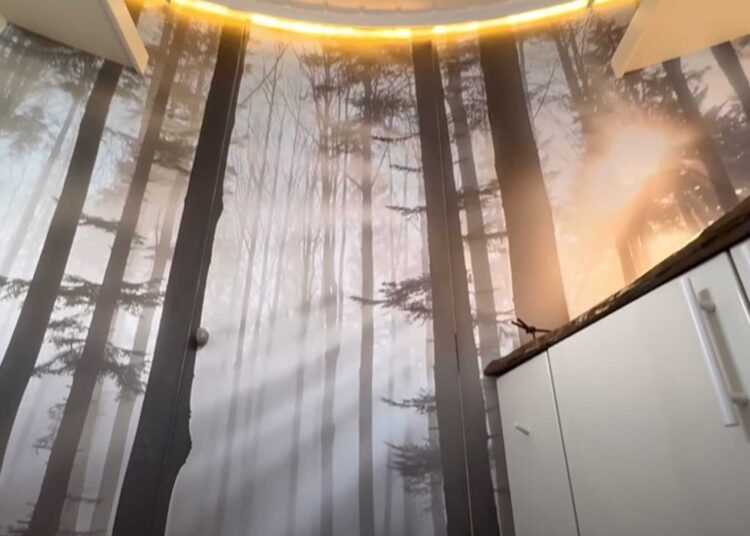Out of necessity, most camper van builds look to maximize space and functionality. Often that means making tradeoffs between workspace, storage, as well as kitchen and bathroom area. Usually, the bathroom is marginalized, but not in this build which includes one of the largest spaces we’ve ever seen.
Designed and built by Van Life Builds, the layout of this tiny home on wheels differs from most. Rather than placing the bed in the back, the double bed sits behind the cab and converts into a sitting area. Above it, a kid’s bunk utilizes part of the space above the cab and doubles as added storage space.
Drawers add additional workspace, pulling out to increase countertop area and provide storage. Reclaimed Douglas fir wood used throughout the interior adds warmth, as does the special coffee corner, which also serves as an inspiration for the interior’s colors. The designers wanted the interior to feel like a warm embrace, especially in cold climates.
The open layout seeks to maximize space and make the interior appear larger than it is. Cabinets line both sides of the interior with portholes providing light and a nautical feel to the interior. Curved shapes are used for the upper bunk and the bathroom wall, which is covered with wallpaper of a faux forest.
A curved door opens to reveal a large wet room with space for two people. At first, the space seems extravagant. It appears to take up a third of what appears to be a Mercedes-Benz Sprinter. But it’s intended to double as a dressing area and additional storage when not in use. The wet room features a large rain shower head, shower bench, and a full-length mirror. A small portable toilet sits in a recessed area and can be accessed from the rear of the camper to be emptied.
Electricity is provided by a pair of 100 amp hour batteries stored with a power inverter inside a seating area. Both the heat and hot water systems were supplied by Whale Van Life which specializes in water and heating systems for campers. The beauty of these systems is they are mounted underneath the living area, so they don’t take up precious interior space.
Read the full article here

























